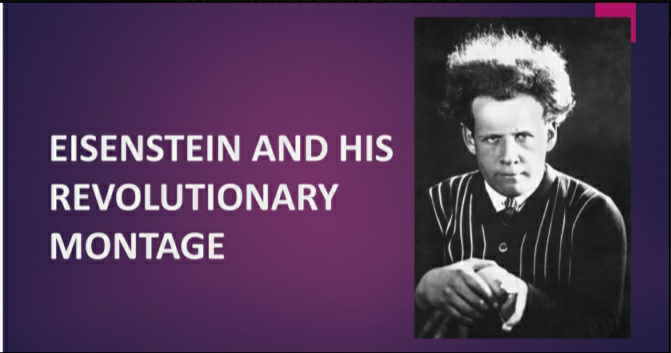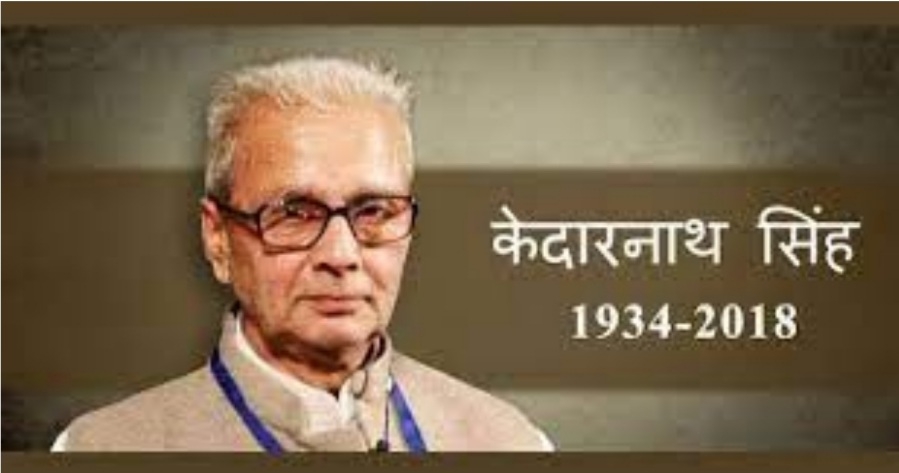EISENSTEIN AND HIS REVOLUTIONARY MONTAGE-2
EISENSTEIN AND HIS REVOLUTIONARY MONTAGE-2
Eisenstein is no stranger to any movie goer. This Russian director attained prominence with his montage-which works through implication rather than proclamation. The Psychological impact produced on the audience became prime inducement behind the directors wielding montage. This Civil Engineer made his career in “Plastic Arts” which aided him immensely in procuring his own place in theatre. During the Russian Revolution of 1917, he was enrolled in the Red army and assisted in entertaining the inmates. His entry into the Proletkult Theatre nurtured the communist sentiments in him and this eventually paved way for his directorial venture. At the onset he cloaked himself in the garb of a costume designer. His fascination with Kabuki plays reflected in his works. In 1925, his first film Strike hit the theatres with a bang. He proved himself to be a worthy theoretician with his thought provoking article in Lef edited by Vladimir Mayakovsky. Eisenstein lost interest in the usual conventional method of editing where images are arranged logically and meaning is predisposed. He advocated the technique of Montage where shots are arrayed randomly without much logical connection between them.
In an efficacious Montage film, the director was at liberty to frame his shots according to his whims and fancies provided that the movie would create immense psychological effect. Nevertheless, the viewer should get the ulterior motive of the director. Eisenstein holds that, this epiphany which reveals the director’s hidden intent is rather metaphysical than natural. In Strike, Eisenstein picturizes the suppression of a strike by the Russian Tsar. Herein, the master juxtaposed the images of “workers being mowed down by machine guns” with that of “cattles being butchered in a slaughter house.” The film which epitomized Eisenstein’s artistry- Battleship Potemkin was an immaculate film in its conception and execution. This movie was made to “commemorate the revolution of 1905.” Each element in the film including -Editing, Picturing, treatment of the theme and depiction of brutality complemented each other and ensued an irreplaceable movie.
The succeeding film- October dealt with the change in politics after the Revolution of 1917. Eisenstein’s fame rests primarily on his Soviet Montage Theory. This Movement hit Russia in the early 1900s. Though initiated by Kuleshov, Montage was molded into an ingenious technique by Eisenstein. He divided Montage into 5 types. (1)Metric (2)Rhythmic (3)Tonal (4)Overtonal (5)Intellectual. The path breaking movies which triumphantly employed Montage are Battleship Potemkin(1925), Mother (1926), October (1928) and Man With a Movie Camera (1929).
Intellectual Montage is the primary one among all of the montage techniques. This type of montage invites the audience to derive meaning by close scrutiny of the shots juxtaposed. Different combinations of images would convey diverse meanings to varied people in various contexts. Emotions and significations are communicated to the audience by editing techniques employed by the director. Kuleshov was the first one in achieving this distinction with his Kuleshov Effect. Kuleshov advocated Intellectual Montage while Eisenstein propagated Dialectical Montage. Though we use various terms in its description, Montage primarily means juxtaposition of shots to evoke the desired effect from the audience.
Dialectical Montage, according to Eisenstein, is a technique where two conflicting shots are grouped together to manifest the conflict. This gives birth to an abstract concept which the audience could readily access. This is intended to perform a political and social function. The events which are depicted through this montage agitate the audience and consequently, certain ideological agenda is propagated. Eisenstein utilizes the revolutionary and influential potential of films exhaustively. In his vantage point, clashing or conflicting shots can only be powerful enough to influence the viewers. Mere juxtaposition of connected images can never be persuasive enough. Eisenstein’s Theory has its genesis from Hegel’s concept of Thesis and Anti-thesis resulting in synthesis.
Strike- the first movie which revealed Eisenstein’s finesse in film making was notable for its portrayal of historical events, artful narration and to crown all, his dexterous use of conflicting montage. This movie pictures the exploitation of the proletariats, their eventual revolution and their sufferings in the hands of the oppressive authority. The scenes portrayed in the film are set in Tsarist Russia prior to Bolsheviks Revolution. This movie echoes the Marxist Philosophy of unity among labourers.i.e, myriads of individuals working in unison towards the upliftment of the community. No single protagonist can be spotted throughout the movie. This movie, indubitably, is a gallery of various events. The chaos, violence and rebellion are vividly pictured herein.
Since most of the Soviet dwellers were unlettered during that time, the relevance of Eisenstein’s movie got accentuated. The potential and impact was far reaching and comprehensible to the audience. As has been mentioned earlier, juxtaposition of the strikers and cattle produced a heart wrenching effect and can be deemed as the best example for effective employment of conflicting montage. October: Ten Days That Shook The World (1927) exhilarated the audience with its alchemy. This was also one of his Soviet Propagandist movies where he diligently exploited his métier montage. This film which was grounded on the Bolshevik Revolution of 1917 was captured in a documentary style. It was a visual recreation of Ten Days That Shook The World by John Reeds. Apart from montage, the images employed by Eisenstein were also remarkable. For Eisenstein, film was not only an aesthetic medium but a political weapon which performs a didactic and revolutionary function. Calling him the Uncrowned king of Silent Films would never sound a hyperbole!
REFERENCES:
Heckmann,Chris.”Soviet Montage Theory-Definition,Examples and Types of Montage.” Studio Binder,8 Mar.2020/www.studiobinder.com/blog/soviet-montage-theory/
Mitry,Jean. “Sergei Eisenstein.” Biography,Films and Facts, Encyclopedia Britannica,07 Feb.2022britannica.com/biography/Sergey-Eisenstein
Mohanty,Swaham.”Sergei Eisenstein’s Strike(1925):Movie Analysis and Historical Backdground.” Cinema Monogatari,3Dec.2021 www.cinemamonogatari.com/2021/12/03/strike-1925-analysis-and-background
Moore,Roger.”Classic Film Review-Eisenstein’s “October (Ten Days That Shook the World)”,Montage of a Revolution(1927).”Movie Nation,04Nov.2021 rogersmovienation.com/2021/11/04/classic-film-review-eisensteins-october-ten-days-that-shook-the-world-montage-of-a-revolution-1927/
“Soviet Montage:Crash Course Film History #8.” Youtube,Uploaded by:Crash Course,2Jun.2017
Vassilieva,Julia.”Eisenstein,Sergei.” Senses of Cinema,Great Directors,Dec.2017
-Santhwana Thomas









Comments
Post a Comment